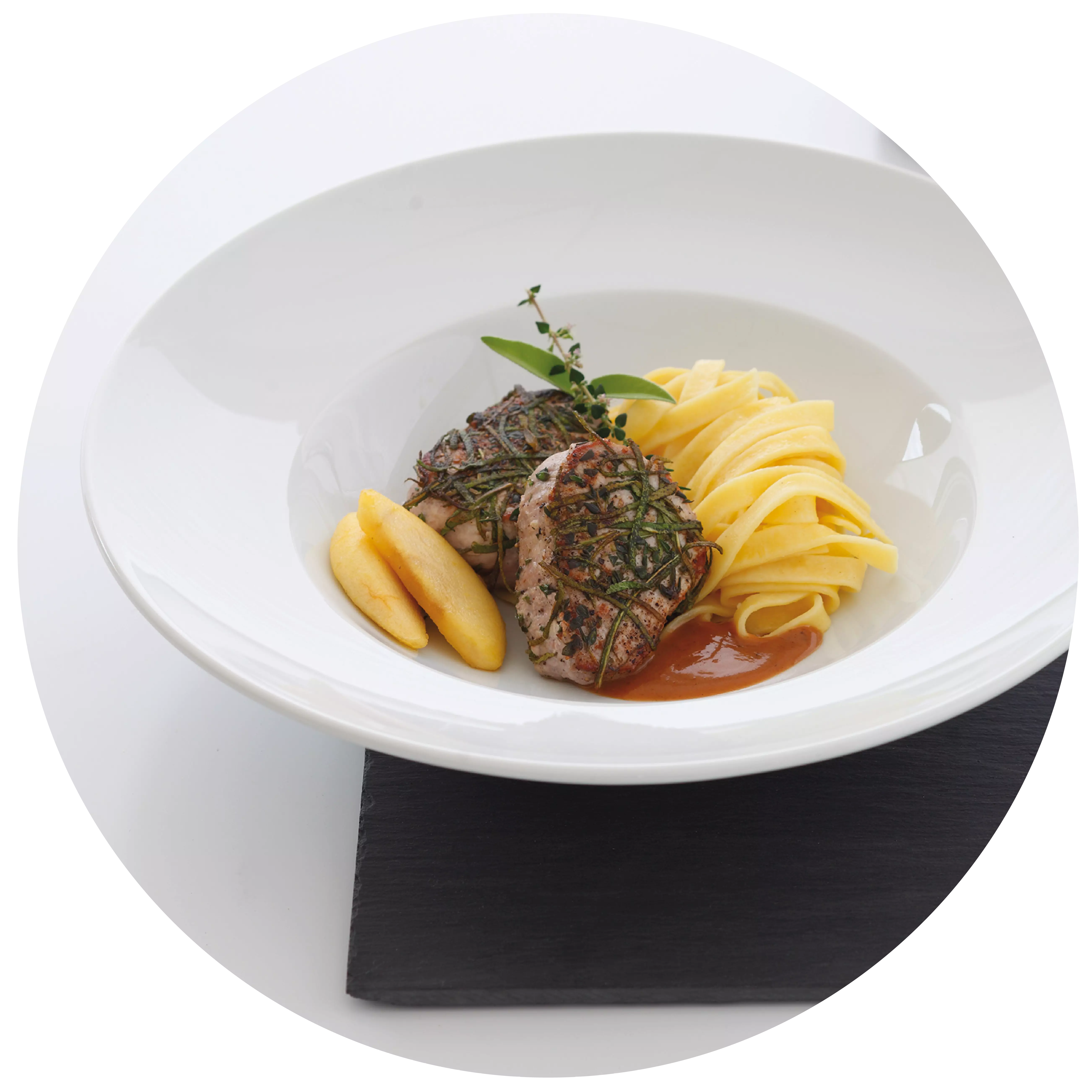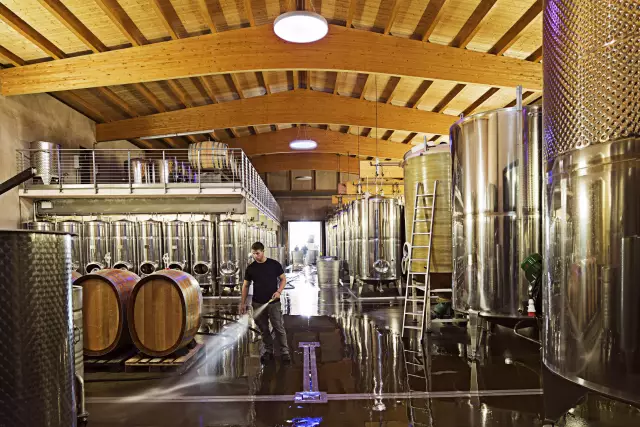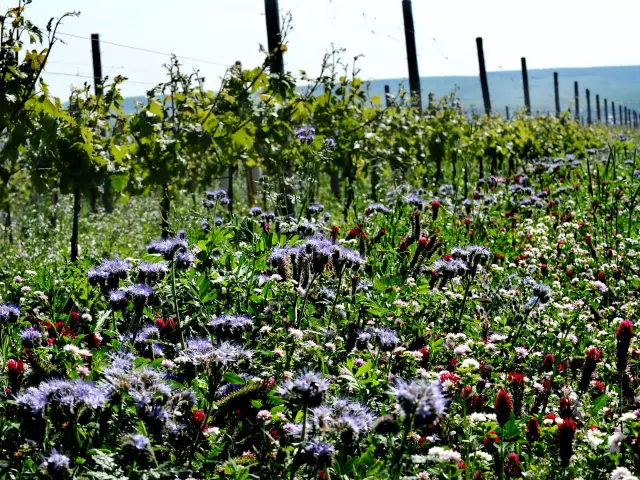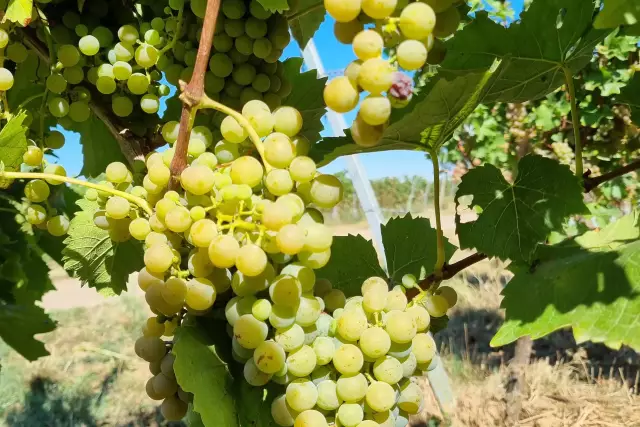Work in the vineyard
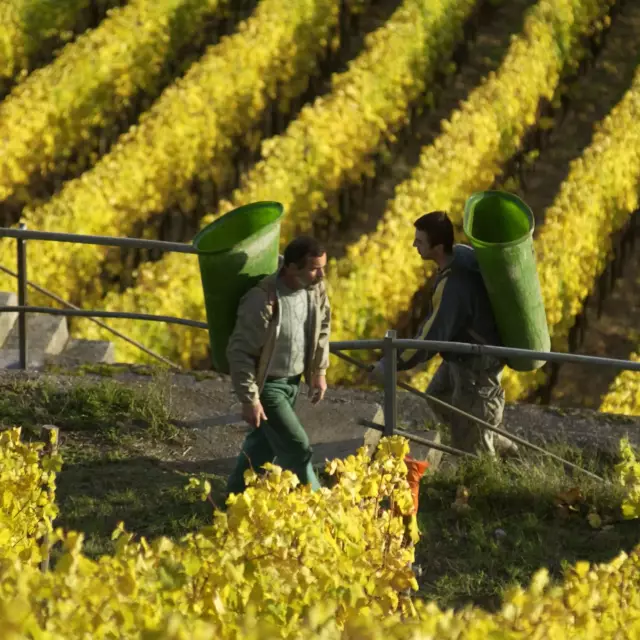
In the spring, the vine is cut back. Before budding it is bent and shaped.
Facts
-
> 300° Öchsle
are qualified for the making of Trockenbeerenauslese (TBA)
-
8,9 Mio
hectoliters were harvested in Germany in 2022
Work in the Vineyard
Many stages of work are involved before a finished bottle of wine reaches a consumer. Throughout the entire year a wine-grower has various tasks to tend to, such as training and pruning the vines, soil care, foliage treatment and thinning, as well as harvesting the grapes as selectively as possible.
New developments in viticulture and cellar technology during the past few decades have enabled the German wine industry to flourish. Thanks to intensive research in recent years, there have also been decisive improvements in the overall quality of German wine. Justifiably, one can say that the amount of really excellent German wine produced today is unprecedented.
Spring
Usually, in January and February, the old wood is pruned away, a procedure that definitely influences the potential yield and ultimately, the quality of the wine. The number and length of canes and their shoots also play an important role. Quality-conscious growers generally reduce the number of canes per vine to two short ones or one long one. Many growers have come to realize that today, with a worldwide surplus of wine, quality is a vital competitive factor and quality begins in the vineyard. Vine prunings are usually mechanically chopped or crushed, then worked back into the soil to improve the humus supply. To this day, pruning by hand remains a very labor-intensive task. It takes large estates several weeks to complete this work.
Vineyard activities peak in the springtime. Before bud-burst, the vine's shape takes form through bending and tying the canes in order to ensure an adequate nutrient supply to the shoots. Plowing and seeding for green covering, as well as the natural growth of plants in the vineyard, brings the soil to life. Organic nutrients, e.g. manure, straw or compost, as well as supplementary minerals, e.g. magnesium, calcium or phosphate, are also added at this time. Today, economical and environmental factors play a great role in how vineyards are fertilized. Modern methods of soil analysis easily help determine where there are deficits. Carefully planned fertilization and green covering also help avoid ground water pollution.
"As little as possible, as much as necessary" is the motto of modern wine-growers with regard to spraying to combat vine pests and fungus disease. Starting with healthy vines, i.e. planting vines that have been grafted onto suitable rootstock, for example, also helps reduce the incidence of disease and damage.
Summer
Another labor-intensive phase begins after blossoming in June. Ideally, the blossoming period, the self-pollination phase that leads to berry formation, is not prolonged. This could result in coulure (blossoming without fertilzation) or millerandage (development of uneven-sized berries). Insufficiently fertilized blossoms wither and/or drop off in windy or rainy weather, and thus, seriously reduce the yield. Removing unwanted shoots promotes growth. Growers also prune clusters in order to reduce yield and thus, improve quality.
Between June and August, a thick leaf wall develops that is kept in shape by tying or binding the shoots. Healthy, i.e. green, foliage is very important for assimilation in the leaves. Nevertheless, some of the leaves must be removed in order to increase sun penetration and improve air circulation. Leaf pruning in July and August also regulates the height of the vine. Today, this work is usually done by machine.
In July and until the beginning of August there are still means of influencing the quantity and quality of the grapes. Thinning out some of the pea-sized berries strengthens those left on the bunch. More and more growers are using this method to improve quality.
Autumn
Starting late summer, the grapes clearly begin to ripen. The amount of sugar in the berries rapidly increases as the acidity decreases (particularly the malic acid; the tartaric acid is retained).
Harvest
This is certainly the most exciting moment for the winemaker and when it is seen whether all the efforts to maintain the vineyard will be rewarded with a successful wine. When a wine is ripe for harvest depends mainly on the type of grape and the weather. Ultimately, the winemaker determines when the grapes find their way into the cellar, estimating the weather risk and planning which grapes to press when. On the one hand, a wine can get better when the plant has a long time to ripen the grapes. On the other hand, a sudden frost or a rainy season can jeopardise the harvest.
The higher the desired wine quality, the more important the question of whether to harvest by hand or by machine. Handwork enables precise selection: only the ripe grapes are taken and the rotten berries can be cut out of the bunch. Sometimes one has to walk through the vineyards over several days and only cut off the ripe grapes. Thats obviously expensive. A mechanical harvester, on the other hand, saves time and money. The principle: The grapes are shaken down by vibration and caught. If the harvester is set correctly and the grapes are optimally ripe, this way of harvesting is very gentle and doesn’t necessarily mean a reduction in quality.
Can the winemaker simplify one of the most tedious tasks in the vineyard - pruning?
Pruning can be partially or even completely eliminated - if the conditions such as the age of the vineyard, the width of the rows, the desired quality, etc. are matched. This is called minimum or no pruning, but opinions differ.
Varietals

More recipe ideas
in a bacon coating Lamb
in a bacon coating
- 4 Stück Lammlachse à 150 g
- 4 Scheiben Bacon
- 0,1 Liter Wein
- 0,3 Liter Gemüsebrühe
- 1 kleine Schalotte
- 20 Gramm Butter
- 4 EL Olivenöl
- je 2 Zweige Thymian, Rosmarin, Salbei
- nach Geschmack Salz & Pfeffer
Season the lamb salmon with pepper and massage 2 tbsp of olive oil into the meat. Finely chop the thyme, rosemary and sage and season the meat in the herbs. Marinate in the fridge for a few hours.
<p
<p>Wrap the meat with the bacon slices and sear on all sides in the remaining olive oil. Continue to cook for approx. 4 minutes on each side over a low heat (the cooking time depends on the thickness of the lamb loin - it is best to do a pressure test). Then wrap in aluminium foil and leave to rest in the oven at 80 °C – so they remain juicy and slightly pink on the inside.
This goes well with Bärlauch risotto.
- Dornfelder (trocken)
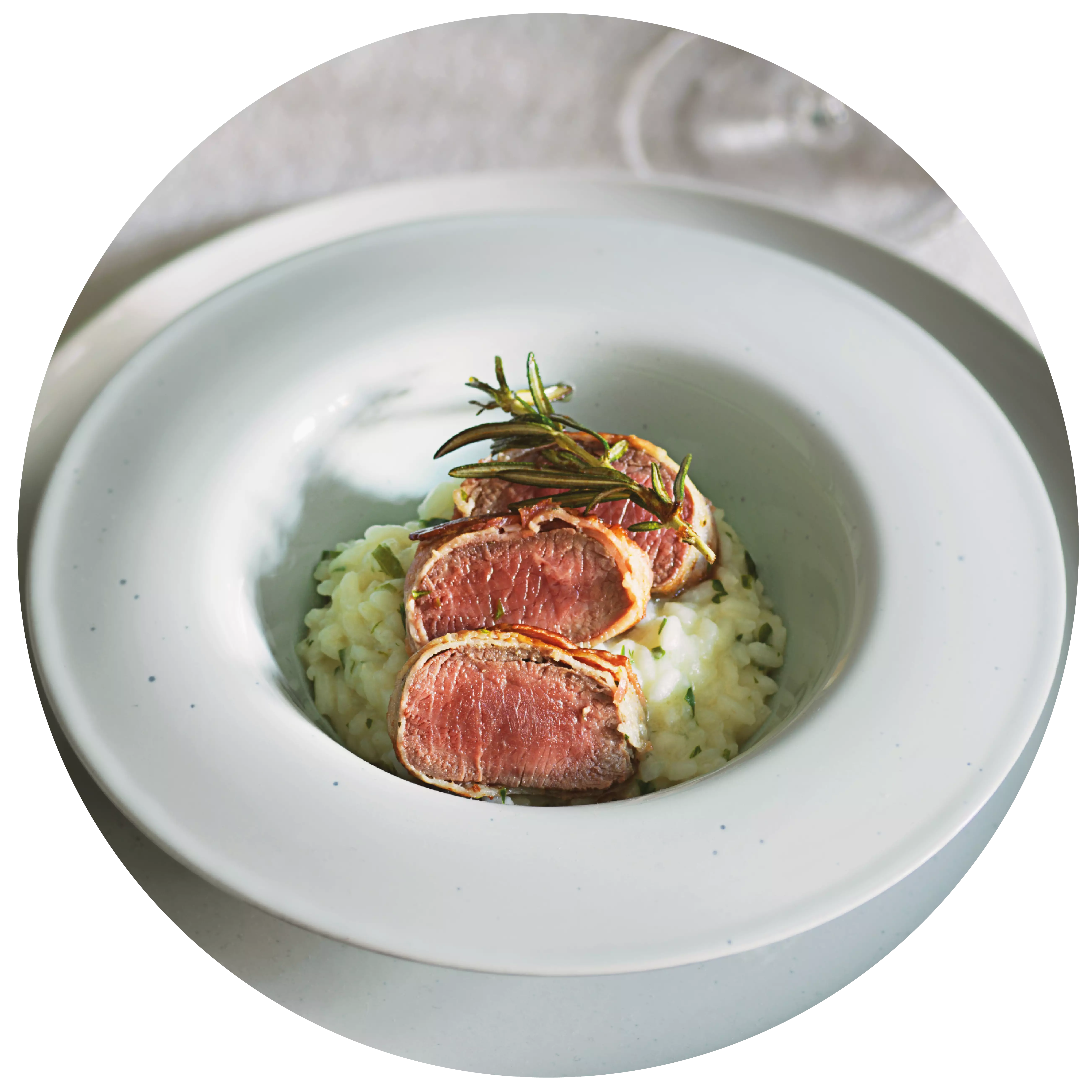
Asparagus harmonises perfectly with Silvaner Roasted asparagus with wild garlic and ribbon noodles
Roasted asparagus with wild garlic and ribbon noodles goes perfectly with Silvaner.
- 1kg weißer Spargel
- 1kg grüner Spargel
- 200g Butter
- 1 TL Zucker
- 2-4 EL Walnussöl
- 600g Tagliatelle
- 1 Prise Salz und Pfeffer
- 200 ml Schlagsahne
- 1 Spritzer Zitronensaft
- 8 Bärlauchblätter
Preparation:
Peel the asparagus (green asparagus only in the lower third), cut off the ends. Cut each spear in half lengthways and cut the halves in half. Cut the halves into 3 – 5 cm long pieces.
Heat the butter in a large pan, add the sugar. Caramelise briefly. Add the oil and asparagus and cook over a medium heat for approx. 10 mins. until al dente, tossing occasionally.
In the meantime, cook the tagliatelle in boiling salted water according to the pack instructions until al dente.
Pour the cream into the asparagus and reduce until creamy. Season the asparagus with salt, pepper and lemon juice.
Rinse the pasta, drain and mix with the asparagus. Cut the spring onions into strips and fold in.
Wine recommendation:
Silvaner Spätlese dry
- Silvaner (trocken)
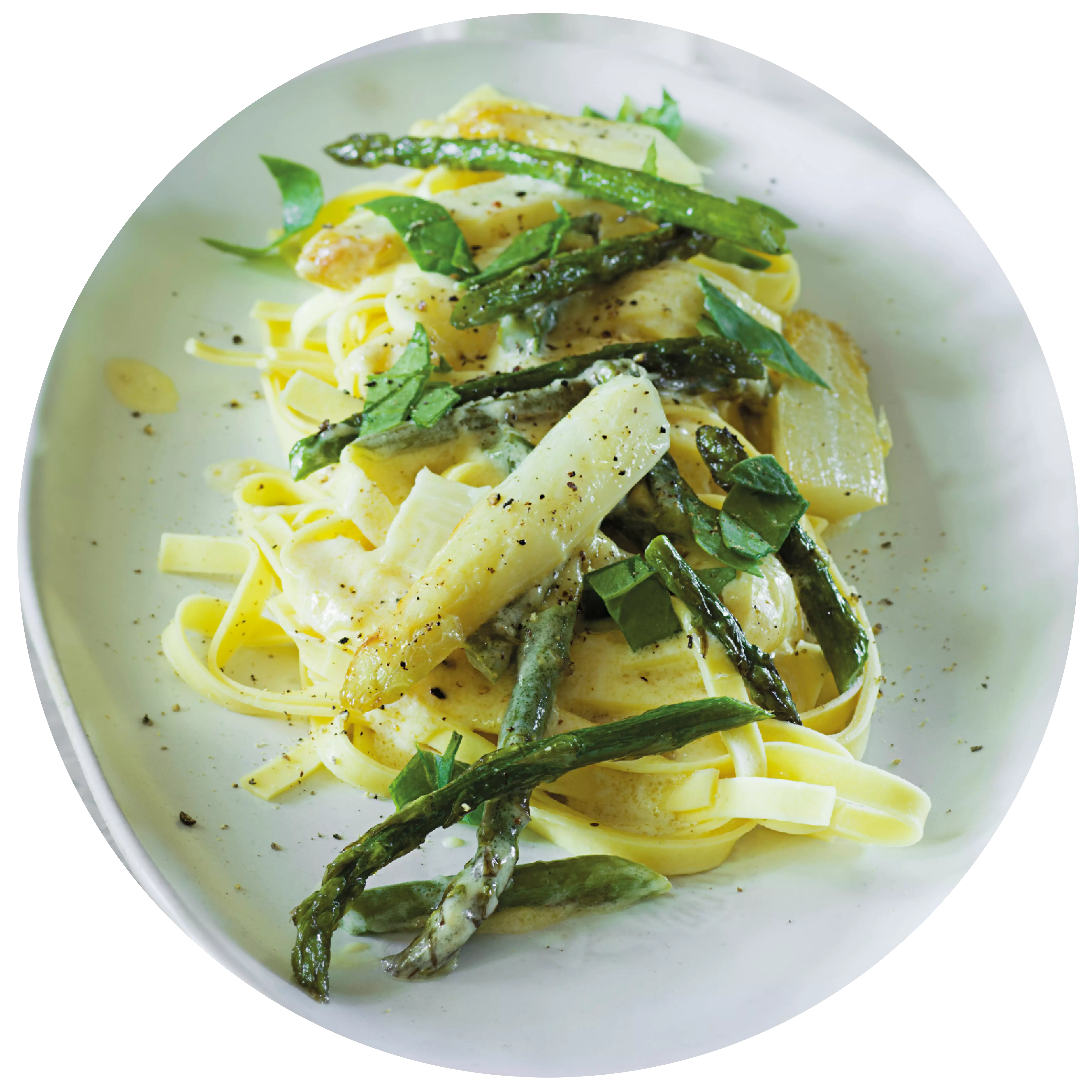
the classic with a difference Franconian cider soup
the classic with a difference
- 500 ml Weißwein (Spätlese)
- 500 ml Geflügelbrühe
- 350 ml Sahne
- 30 Gramm Zwiebeln
- 30 Gramm Weißes vom Lauch
- 30 Gramm Sellerie
- 30 Gramm Karotten
- 30 Gramm Butter
- 180 Gramm Mehl
- 2 Lorbeerblätter
- 1 EL Butterschmalz
- 4 Scheiben Weißbrot
- Nach Belieben Zucker, Muskat, Zimt, Salz
Sauté the vegetables in butter until lightly browned, dust with flour and then add the vegetable stock, wine and 250 ml cream. Add the spices and simmer for approx. 15 minutes.
Remove the crusts from the slices of white bread and cut into 1 cm cubes. Fry in hot clarified butter until golden brown and season with cinnamon, whip the remaining cream until stiff.
<p
<p> Strain the soup and flavour with nutmeg and salt.
Pour into deep plates, garnish with whipped cream and the cinnamon crusts.
- Müller-Thurgau (trocken)
- Silvaner (trocken)
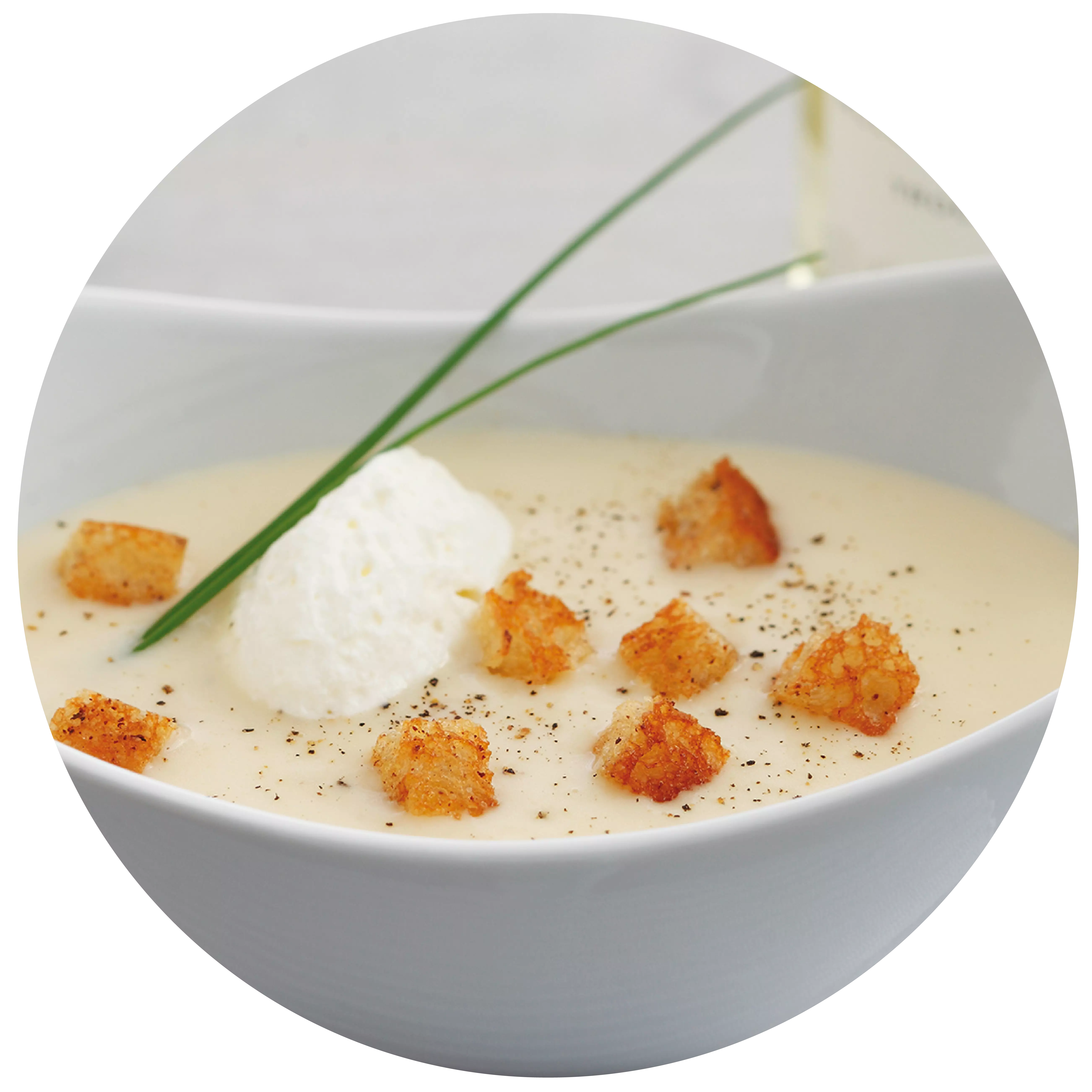
with apples Pork medallions
with apples
- 8 Stück Schweinemedaillons
- 500 Gramm Bandnudeln
- 2 große Äpfel
- 200 ml Sahne
- 10 Blättchen frischer Salbei
- 4 Zweige frischer Thymian
- nach Geschmack Zucker
- 3 EL Calvados
- 1 EL Öl
- zum Abschmecken Salz & Pfeffer
Slightly pepper and salt the medallions on both sides. Pluck the thyme, cut the sage into fine strips and roll the medallions in the herbs. Fry the meat in a pan with a little oil on both sides, not too hot, until it starts to colour. Remove from the pan and place on a preheated tray in the oven at 100 °C until cooked through.
Cook the tagliatelle al dente and keep warm.
In the meantime, peel the apples and cut into slices approx. 1.5 cm wide. Reheat the meat pan and add the apple slices. After about half a minute, sprinkle 1 teaspoon of sugar over the apples and allow them to caramelise. After a minute, deglaze the apple slices with a generous dash of Calvados and flambé. Add the cream and flavour with salt and pepper.
Remove the fillet from the oven. Add the meat juices from the oven dish to the sauce and serve the fillets with the tagliatelle, apple slices and Calvados apple sauce.
<p- Riesling (trocken)
